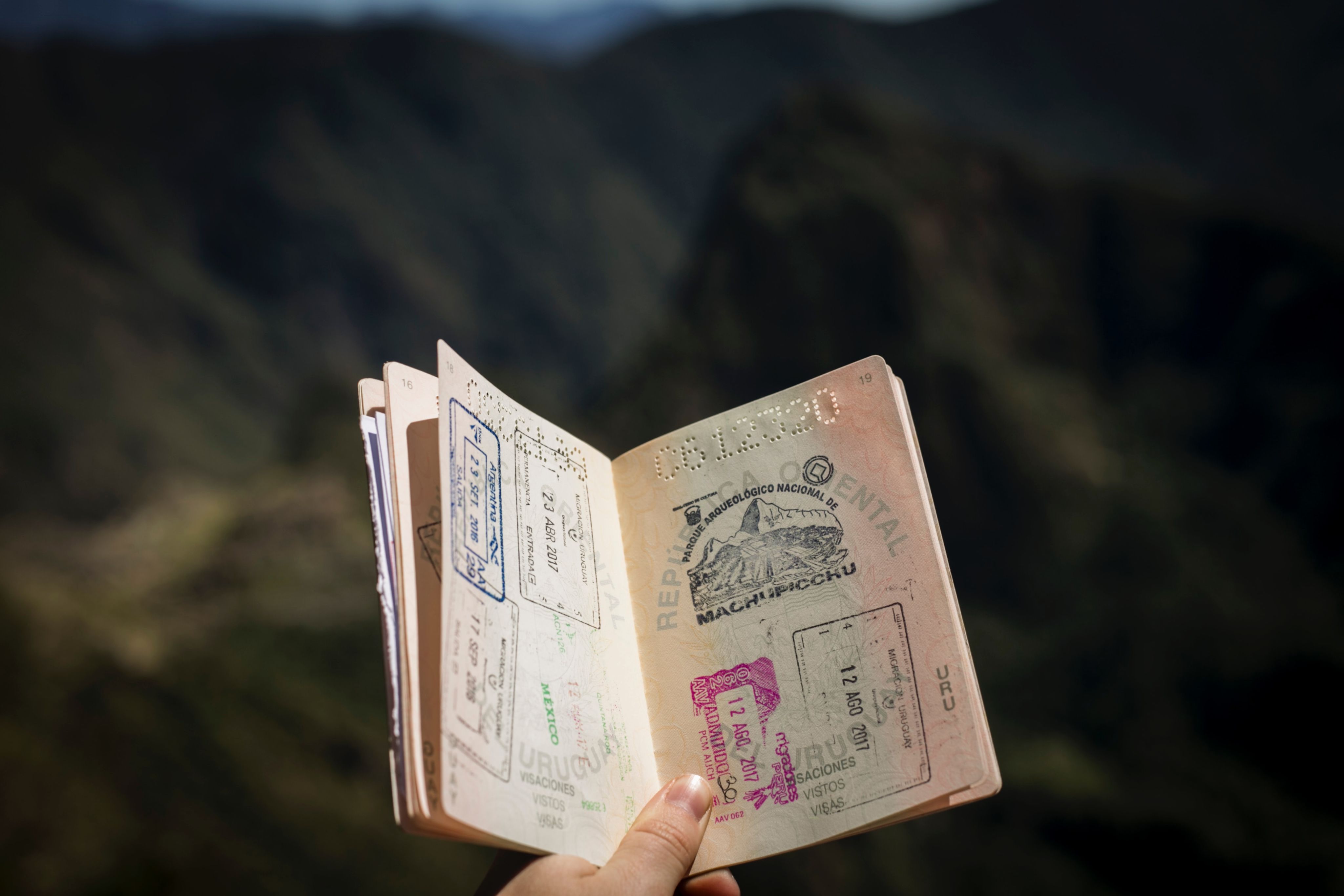Second-Generation Spaniards: A Collection of Stories

Imagine this: It is a beautiful afternoon at the Valencian Lagoon, the sky is painted vivid warm colors by the setting sun and is reflected in the calm waters of the lake. Everything is quiet, except for the calls of the flying seagulls. There are groups of Spaniards along the pier, taking photos and enjoying the view. A boat with tourists appears from the horizon, slowly gliding through the still waters – one of those boat rides with paella at sunset. A middle-aged lady points at the boat and says: “Oh, look, a dinghy. The immigrants are coming to take our jobs.”
This happened to me in October 2021. And this is how I realized it is time for me to tell some stories.
The middle-aged lady was joking, of course. But there are many people who perceive immigrants as those resource-robbing misfits who come from inferior countries and exploit the social welfare system. They see them as different and doubt that they will ever “integrate”.
Immigration is a hot topic in Europe. On TV we see refugee camps and overcrowded boats coming from Africa. A few years back we were talking about the “Syrian refugee crisis”, now there is a “Ukrainian refugee crisis”. All these tragic images and the grave words we use to describe the situation, make us martyrize and single out the others. We categorize them as different and less fortunate until the words “refugee”, “asylum seeker”, and “immigrant” become not only synonymous but also charged with a negative connotation. But we rarely hear the stories of these people outside of the frame of migration.
The Project

For this project, I decided to take a different approach to immigration storytelling. Instead of asking immigrants about their treacherous journey to their new homes and the challenges of integration, I decided to talk to their children. You will read five personal stories of young adults (18 to 25 years old) who were either born or grew up in Spain in families of foreigners. We discuss their childhood, living between two cultures, their sense of belonging, home, community, and alienation.
Through these stories, you will get to know five young Spaniards. Their experiences and their personal circumstances vary a lot. But they also have many things in common. Some of the obstacles they had to overcome are present worldwide and the feelings of rejection and confusion are universal. They are not just five people in Spain – there are five people finding their way home. And home is something we are all looking for.
None of them aim to serve as a representation of a group. They are in no way a statistically significant sample and their journeys are so diverse that it would be difficult to draw any definitive conclusions. In fact, all the conclusions in this project are left to the reader and you will only “hear” the author’s voice in this piece.
These five profiles are the faces of the topic. They show you the granular, the personal. The zoom in on the topic. And if you keep reading this article, you will see the numbers of the topic. The graphs, the facts, the statistics. The big picture. Let me introduce you to Spain’s particular migration landscape.
The Spanish Nationality

According to Spain’s National Statistical Institute (INE), the population of Spain in July 2021 was just over 47 300 000 people, out of which 42 million have Spanish nationality. This means that over 5 million people in Spain (more than 10% of the population) are foreigners. However, the data does not distinguish between those who acquired Spanish nationality later on in life.
If we look at the place of birth of these 47 million, we see that more than 7 million of them were not born in Spain (meaning that around 2 million were born abroad and acquired citizenship). The top 3 areas from which most foreigners come to Spain according to this census are South America (almost 2 and a half million), the other members of the European Union (1 650 000), and Africa (1 157 000). In comparison, the number of Spanish residents who are nationals of a South American country is less than 1 100 000. This number does not include people with dual citizenship. The babies born to at least one foreign parent between 2015 and 2020 constitute 23% of all births.
There are several ways to obtain the Spanish nationality. The first is called citizenship by residency and lets legal residents request the citizenship after spending a certain period of time in the country uninterruptedly (2 years for nationals of ex-colonies and Portuguese, 5 years for refugees, and 10 years for everyone else). Citizenship can also be acquired by marriage, by descent, and by option.
People who can benefit from the citizenship by option are children of foreigners born in Spain, people of age (older than 18) who were adopted by Spanish nationals, and those whose parents went through the process of obtaining the citizenship and included their children before the latter turned 18.
Citizenship by descent covers a few particular cases in which grandchildren of Spanish citizens can request the nationality their grandparents couldn’t get (e.g. grandparent was residing in Spain but couldn’t get the citizenship by option because their parents requested it after the child turned 18 or grandparent acquired another nationality and had to renounce his or her Spanish nationality).
All of the subjects included in this story are Spanish nationals, but not all were Spanish by birth, even if they were born in Spain. This is a peculiarity in Spanish legislation and amendments are expected in the near future in this respect. As of now, children born in Spain to foreign parents can obtain the nationality if one of their parents was born in Spain if they were adopted by a Spanish national, if the identity of their parents is unknown or if both parents are stateless.
(Im)migration

Spain has not always been an immigration country. In the 19th and the first half of the 20th century, there was emigration to the Americas, where surging opportunities attracted people from all over the world. After World War Two this pattern changed and the most attractive countries for Spaniards became France and West Germany. In the 1980s, after the end of the Franco regime, economic conditions in Spain improved and it saw the return of those who had emigrated in the previous years – a phenomenon known as reverse emigration.
Between 2002 and 2008, Spain experienced a sudden increase in the number of documented immigrants. After the financial crisis of 2008 hit, youth unemployment reached previously unseen levels, which led many Spaniards (especially those under the age of 25) to leave their country and start a career in other Western European countries. In the past 3 years, this trend continues, but the net immigration to Spain is higher because of the newcomers from turbulent areas.
Immigrants nowadays come to Spain from 3 main areas: South America, Northern, and Western Africa, and Eastern Europe. In the first group, the most notable communities based on data from Spain’s National Statistical Institute are Venezuelans, Colombians, and Ecuadorians. Colonial ties and the shared language bring political stability- and opportunity-seekers to the country, where they can get the nationality after residing for 2 years. Four of the stories are about people coming from South American families. The fifth one is about a girl from Cape Verde. According to the INE, there are 4 639 Cape Verdeans in Spain and more than a quarter of them live in the capital Madrid.
Spain

It is important to note that Spain is a very culturally diverse country, even if we exclude other nationals living there. It is separated into regions, or autonomous communities, each of which has its own peculiarities. Some people feel rather Basque or rather Catalonian than Spanish, in a similar way that an American would tell you that he’s from California or Massachusetts instead of saying he’s American. There are also 3 co-official languages in Spain (Basque, Catalan, and Galician) and a handful of regional variations that locals perceive as separate languages.
It is a common misconception that Catalan and Galician are dialects of Spanish and speakers easily understand each other the same way Australians understand the British. This is not true – both languages are considered separate from Spanish (which is also called Castellano or Castilian Spanish) and form part of the Romance family of languages, to which belong also French, Italian, Portuguese, and Romanian.
Apart from the linguistic differences, the autonomous communities also differ in terms of their way of living. As is the case with most countries, there are stereotypes associated with each part of the country – that Andalusians are lazy, Catalonians are stingy, and Galicians are reserved. Valencians are very picky about what goes in their paella, while people from the South treat the siesta with reverence. All of these differences make it even harder for a newcomer to adjust, and whether one speaks the local language is often perceived as a criterium of their belonging – a person who spent their whole life in Barcelona for example, would not be considered a local unless they speak Catalan.
What Comes Next?

This past year I have seen stories of immigrants and stories about migration. They give you two different perspectives, but I haven’t seen a healthy mix of the two – the general and the personal. This is why I decided to make this project. This article was an overview of the situation, and the next 5 will probably feel like a microscopic view. They are like observing individual cells of the organism of migration. But they can give you answers that the macroscopic view doesn’t. So, if you are still curious to learn more, keep reading.
This article is part of the Second-Generation Spaniards: A Collection of Stories project.
It was created as a Journalism and Mass Communication Capstone Project at the American University in Bulgaria. The academic supervisor is Professor Laura Kelly.


